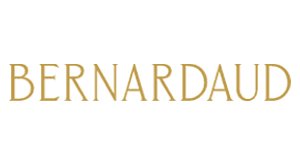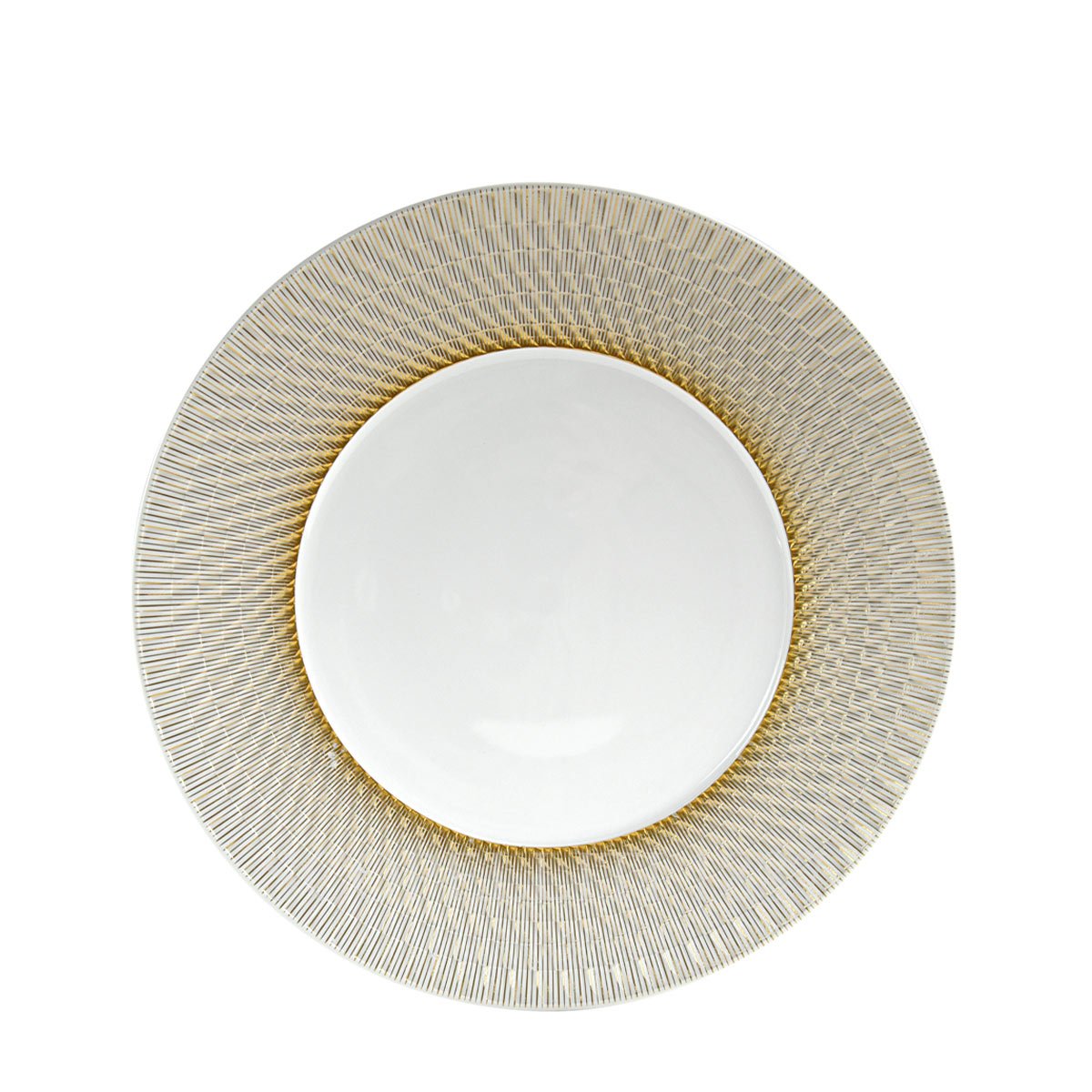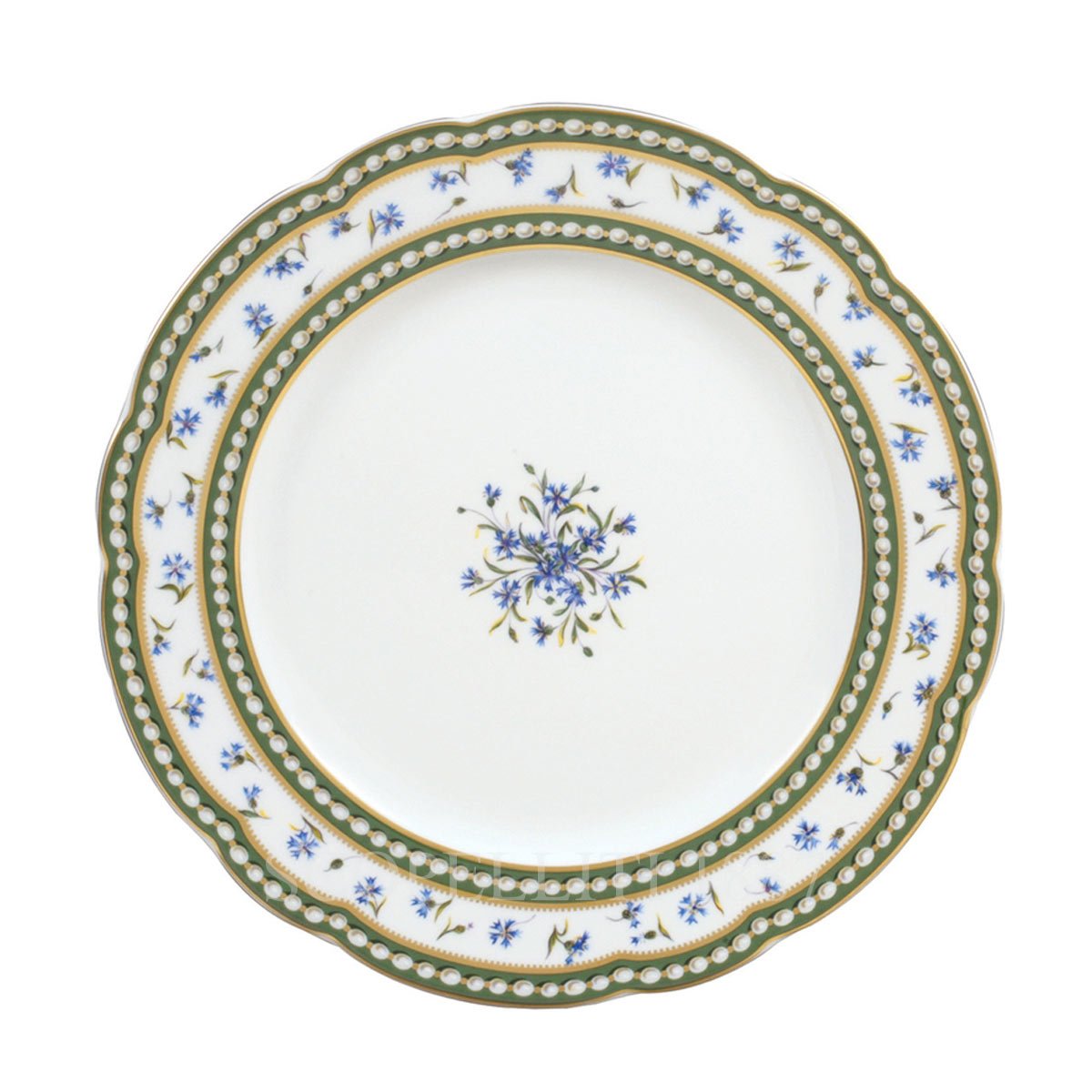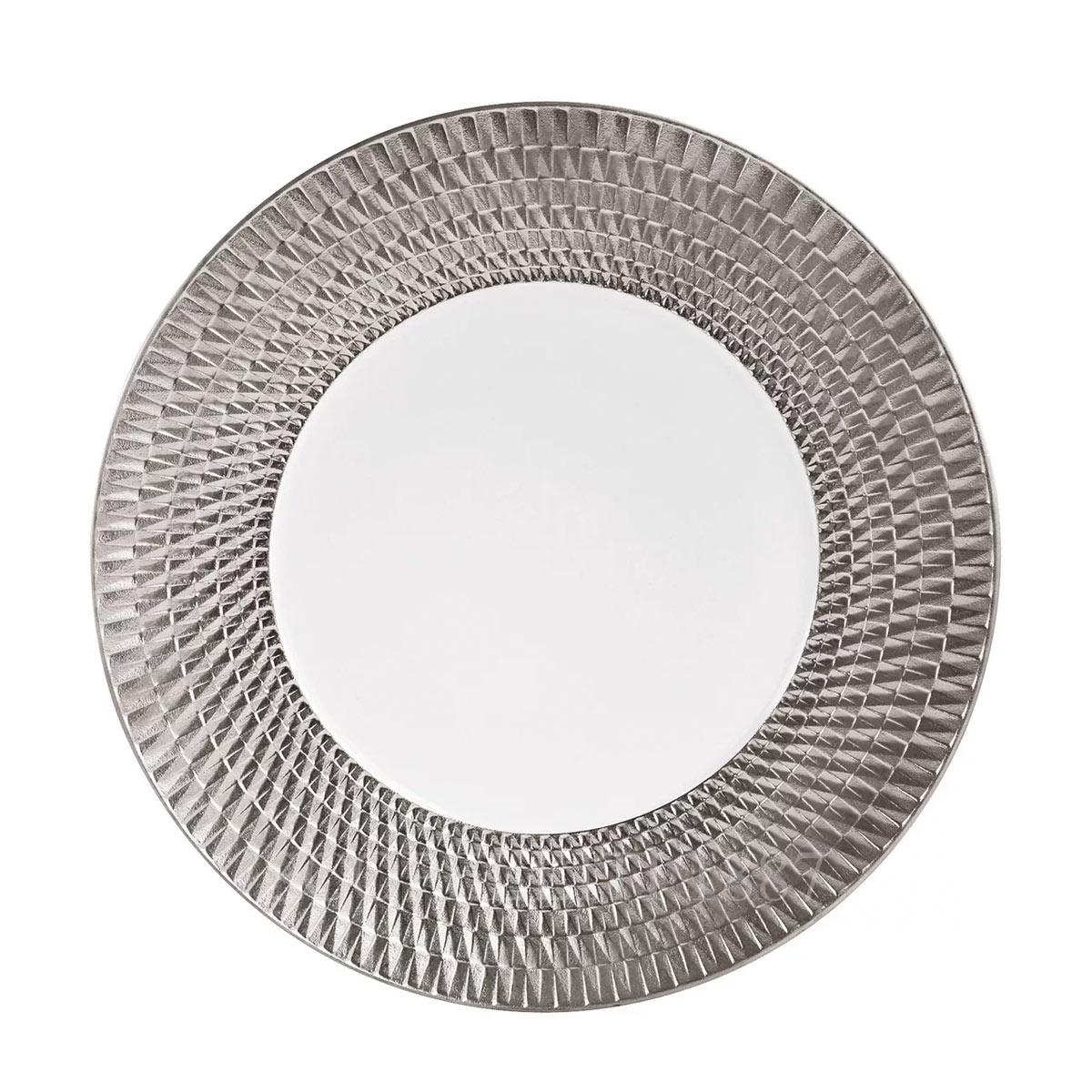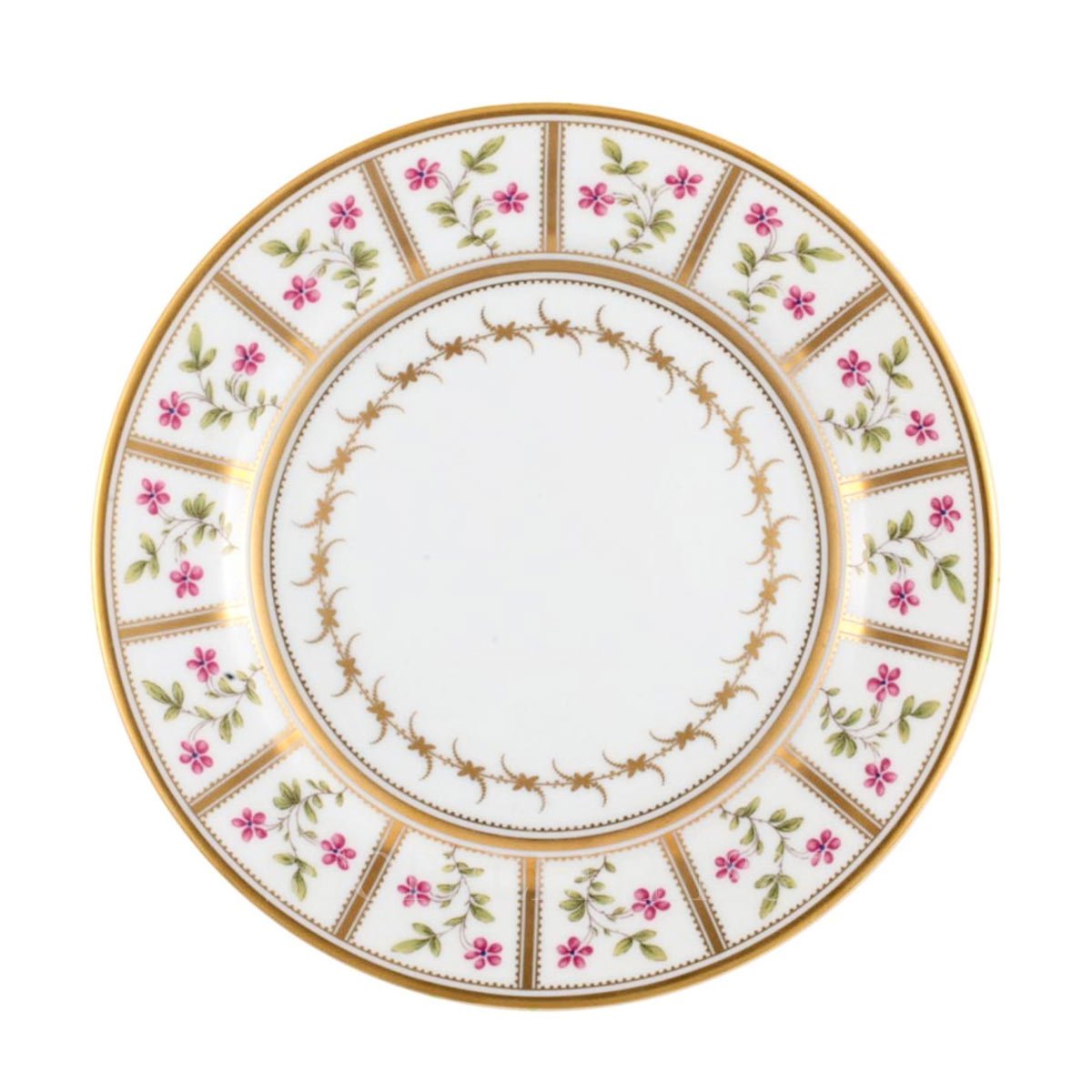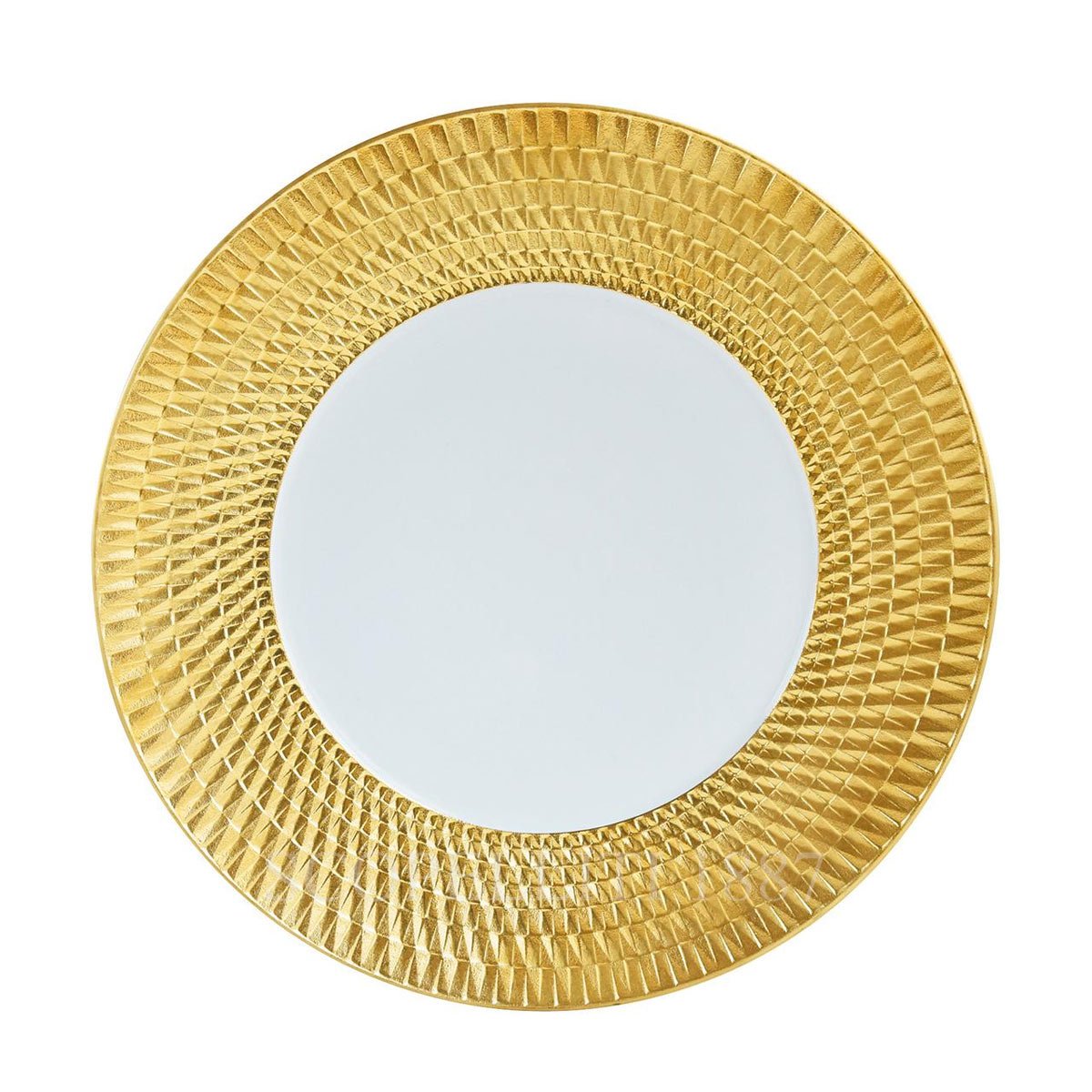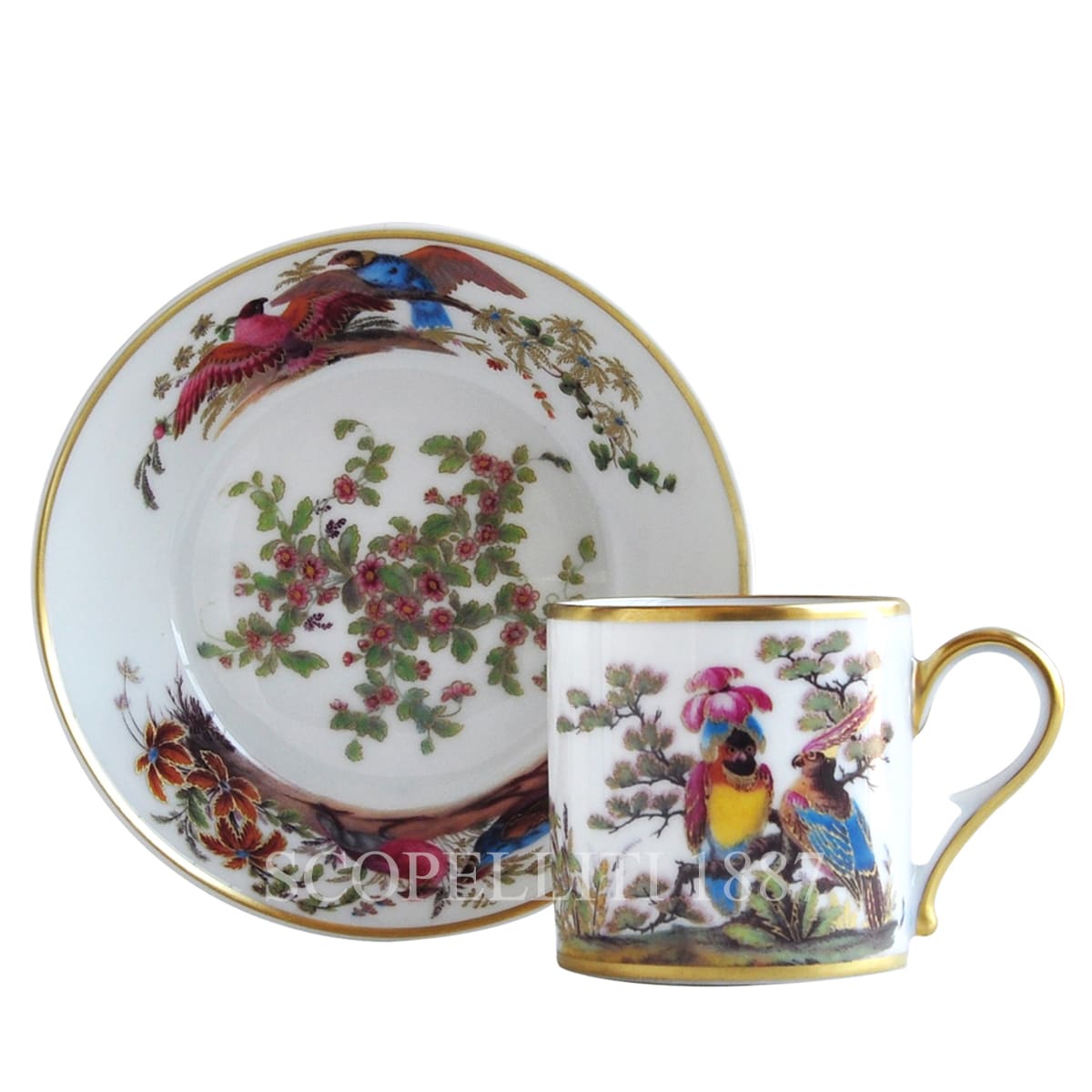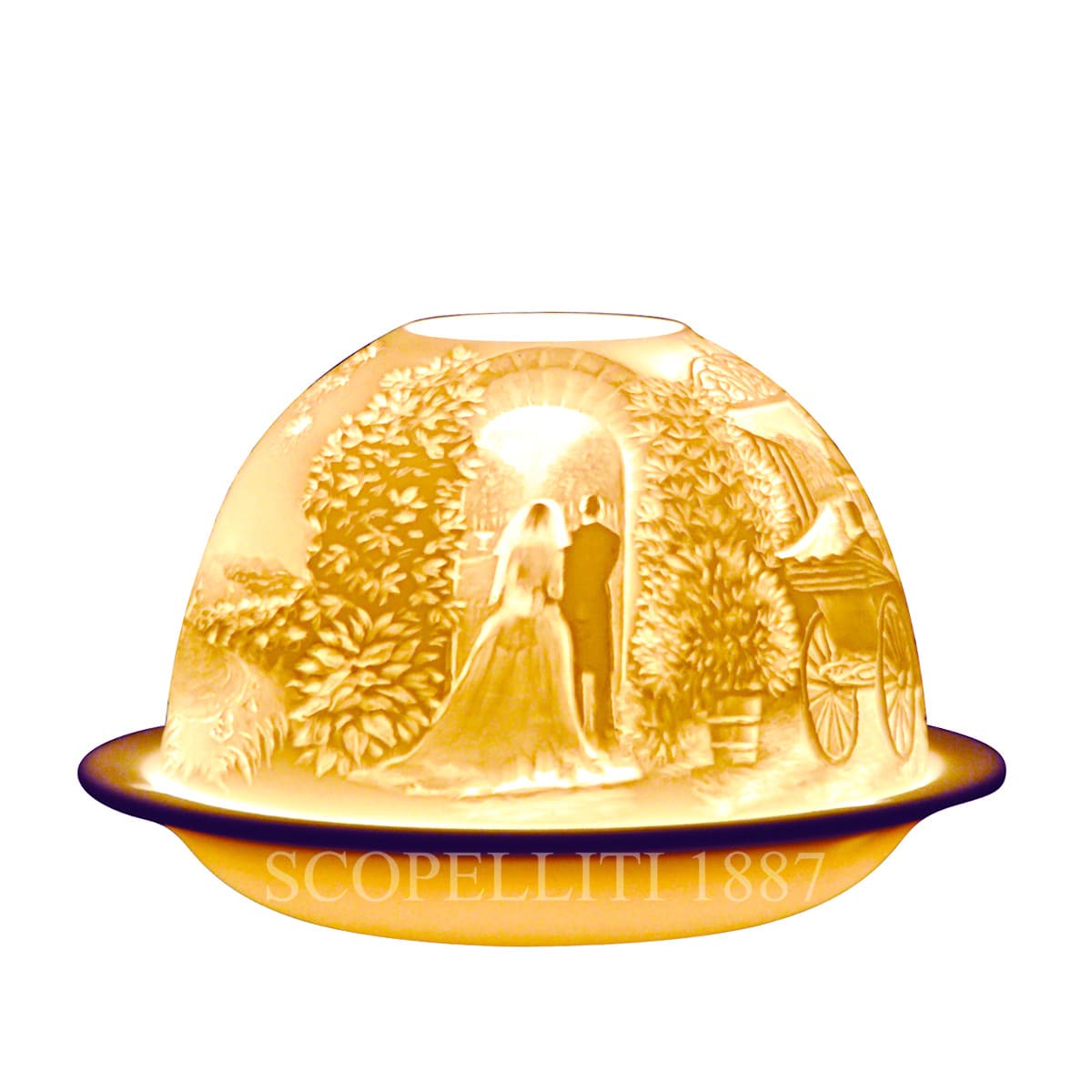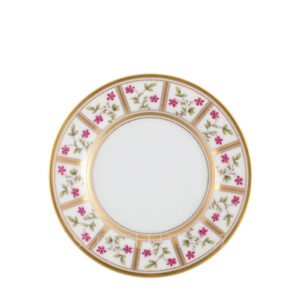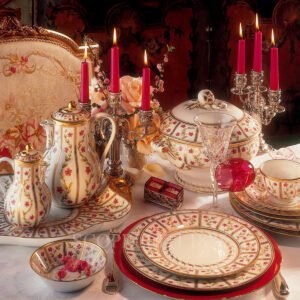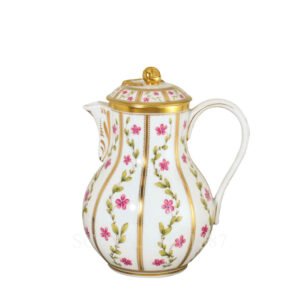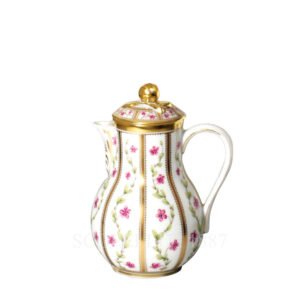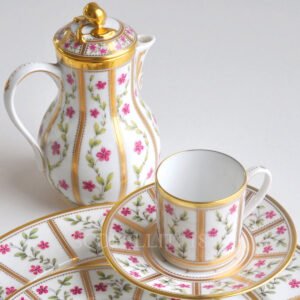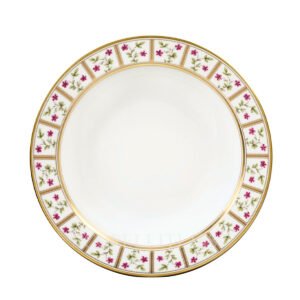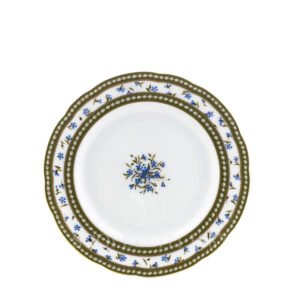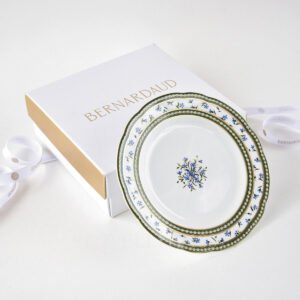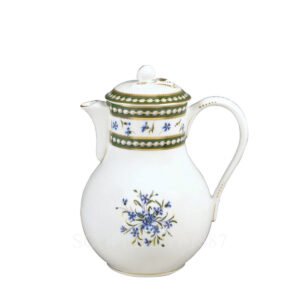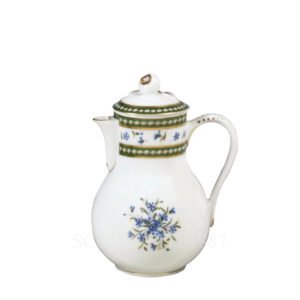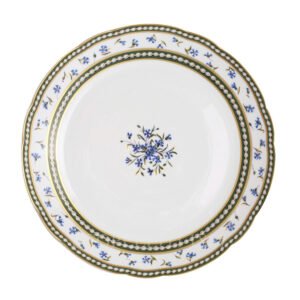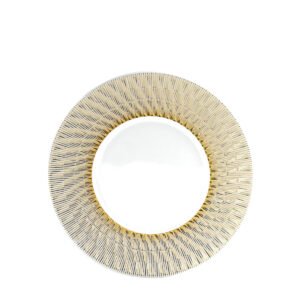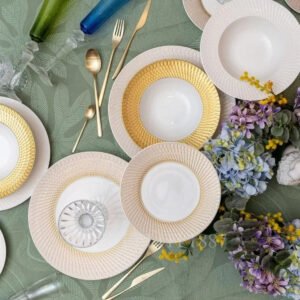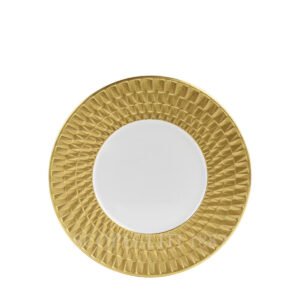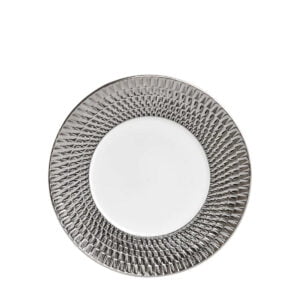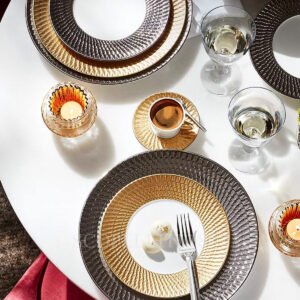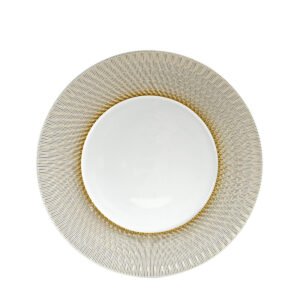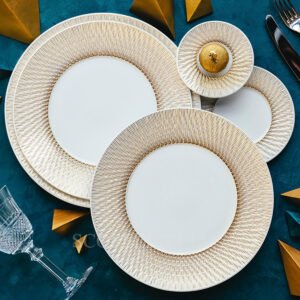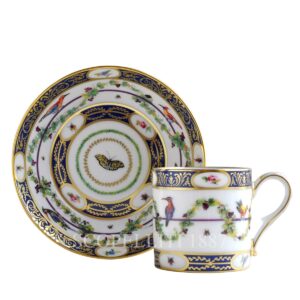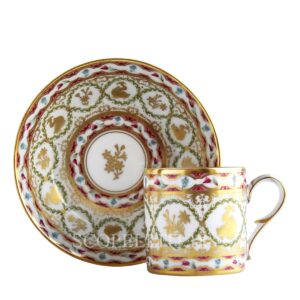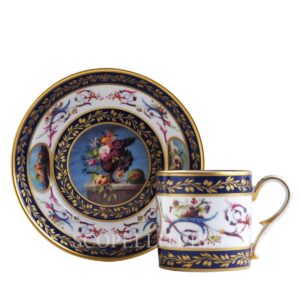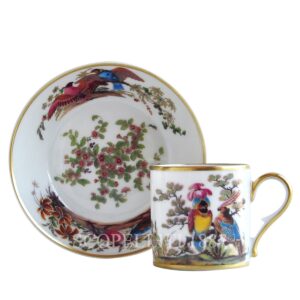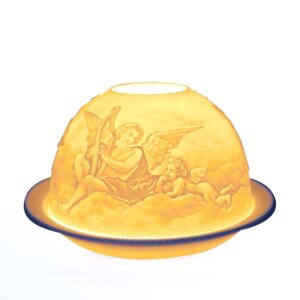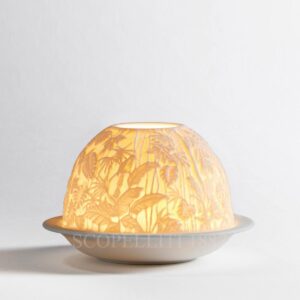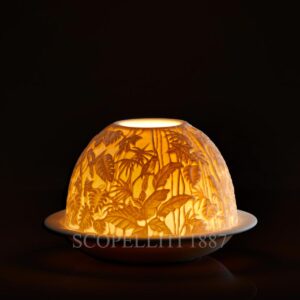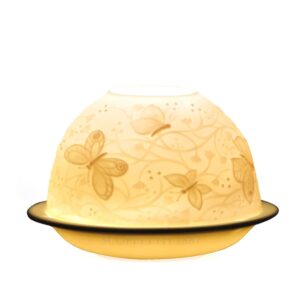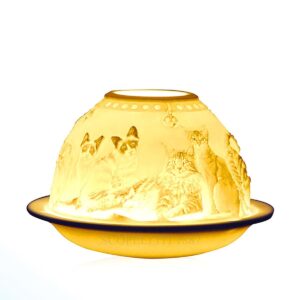
Bernardaud Authorized Retailer
“The Culture of Excellence”
Discover Bernardaud Collections:
The Roseraie porcelain collection is a tribute to flowers. The “Age of Enlightenment” loved flowers very much, as demonstrated by this drawing made in the last decade of that period by the Clignancourt Manufacture. Flowers have always been a favorite motif of painters and decorated the crown jewels of tableware design.
The style enjoyed renewed favour: foliage became less formal, bouquets looser, twigs and cut flowers arranged in a romantic, poetic way. Straight lines give structure and discipline to the exuberance of small intertwined branches, while golden accents illuminate the design and underline the delicate nuances of the flowers.
Perhaps the last vestige of a regime recently abolished by the Revolution, a golden crown mischievously encircles the well of the plate. Original pieces of this sumptuous Roseraie motif can be found in the Montmartre Museum in Paris.
The tableware collection of Queen Marie Antoinette was delivered to the Palace of Versailles on January 2, 1782 by the royal manufactory of Sèvres. Its graceful “Comte d’Artois” shape, enhanced by its “pearl and cornflower” decoration, is enchanting in its delicate simplicity, its seemingly improvised decorative placement.
The cornflower, a simple wild flower, was a favorite of the queen. It was the color of her eyes and he gathered them in fresh bunches at her village country retreat at the Petit Trianon. The understated alignment of the strikingly lifelike pearls reveals the ruler’s innate penchant for luxury.
The motif of the cornflowers is placed between two rows of pearls, on a green background, and highlighted by golden threads. They seem freshly picked, a simple bouquet of wild cornflowers decorates the center of the plate.
Only two of the original pieces of this celebrated tableware can still be found as part of France’s national collections: one is held by the Château de Versailles and the other by the Louvre Museum.
The delicate design of this new collection combines several influences: the light effects of Japanese rice paper screens, the art of origami folding, the weaving and whipping of 1950s furniture, not to mention 3D graphics offered by new technologies.
The result is an unprecedentedly subtle effect of a strictly geometric pattern taken in a twisted momentum. Engraved on the edge of the plates and on the outside of the various pieces in the collection, it is the light that reveals the alternation of matt and bright rendering, giving a vibrant radiance that revives the whiteness of the porcelain.
The addition of a golden motif to the Twist decoration further underlines the subtle effect of the geometric motif taken up with a twisted momentum. Thus it allows for a very pretty radiant effect which accentuates even more the alternation of matte and glossy finish.
The Litron cup, also known as the “square cup”, derives its name from the Latin word “libra”, which expressed a unit of liquid measurement. Its precise size is not consistent, however, as four variations with different measurements exist. The shape of the saucer, which always accompanied the cup, is noteworthy for its raised sides and deep well.
The litron cup was first seen at the Vincennes factory in 1752, when the consumption of hot chocolate, tea and coffee began to grow in popularity. As the shape of a tea cup evolved to be a different shape from that of a coffee cup, the litron shape became strictly associated with the consumption of coffee. Interestingly, until the beginning of the XXth century, it was quite acceptable etiquette to pour a small amount of hot coffee from a litron cup into its saucer to cool coffee before drinking.
The litron cup is almost always a separate collection from a dinnerware service: it is a unique object, decorated with many original designs on a timeless shape. Thus, the litron cup represents the changing styles from different eras and this unique characteristic renders the historical cups and saucers collection from the Ancienne Manufacture Royale even more collectible.
The Lithophane Votivelight is a traditional engraving technique on a fine bisque non-glazed porcelain that was invented in Limoges in 1828. Bernardaud still use it to craft beautiful votives that come in a wide variety of decor.
The glow of the candle shines through the raised and carved surface of the votive, contrasting light against shadow and thus revealing its richly detailed design.
Bernardaud Porcelain and dinnerware, since 1863 in Limoges
Bernardaud is a historical brand of French porcelain born in 1863 in Limoges. The brand combines an extremely refined technique, craftsmanship and innovation that make Bernardaud become a leading company in this field.
Bernardaud remains in the elite of design and innovation, developing technologies in its Limoges manufacture that push back the limits of the art of porcelain-making. Their craftsmen in Limoges strive every day to make each creation bearing the Bernardaud mark a symbol of true luxury and excellence, thus demonstrating that two thousand years after it was first discovered, porcelain remains as remarkable as ever.
Bernardaud Attention to Detail
The attention to detail in the production and decoration makes each Bernardaud plate, cup or jug a great little masterpiece. A typically French taste is revealed through shapes and decorations of the most authentic traditions, supported by innovative and contemporary porcelain creations.
Thanks to the many artist and designer collaborations, every year Bernardaud recounts his vision of art in unique collections, in addition to dishes and iconic collections with decorative elements taken from great works.
Furthermore, the Bernardaud brand is famous throughout the world for the beauty of its lithophanes.
Any question about Bernardaud Limoges Porcelain?
If you have any special requests or require further information about Bernardaud Limoges Porcelain, Scopelliti 1887 staff will be pleased to assist and advise you.
Call us or send WhatsApp on +39 391 345 6441 or send an email at shop@scopelliti1887.com and let us know what we can help you with.

